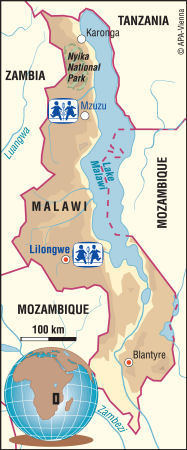2005 Famine: Emergency Relief in Malawi

11 October 2005: SOS Children launches emergency programmes in and around Lilongwe and Mzuzu.
Eclipsed by hurricanes and earthquakes, devastating famine has struck Malawi in Southern Africa. At least 4.2 million people, or a third of the population, are in need of emergency food assistance. This is Malawi’s worst food crisis for a decade. One reason for this crisis is that crops died when the rains failed, and as a result, maize prices have doubled, making food unaffordable for millions. Malawi is also experiencing an HIV/AIDS pandemic, meaning people are spending what little money they have on medicine rather than food.
SOS Children’s emergency relief programme will be implemented through our two Social Centres in Lilongwe, the capital, and Mzuzu, in Northern Malawi. The aim is to reduce vulnerability to the hunger crisis for children, families and communities in the Social Centre catchment areas. Beneficiaries will be targeted during the most critical period, November 2005 to April 2006, when food reserves will be at their lowest.

Each beneficiary (household) of the SOS Children Emergency Relief Programme will be given a ration of 25kg of maize, 10kg of beans, two kilos of salt and one kilo of vegetable oil per month, between November 2005 and April 2006.
The SOS Social Centres are best placed to run the programme successfully having done so for two previous years. SOS Social Centres have in place community structures such as the Village Development Committees (VDCs) which reach out to the most needy in the communities. The VDC and Social Centre staff will jointly develop a list of beneficiaries to target.
Those targeted with emergency food aid will belong to the most vulnerable groups in Malawi. These include: child headed households; households looking after orphans and other vulnerable children; houses that did not harvest anything due to drought; and malnourished children attending the nutritional rehabilitation programme at the SOS Medical Centre in Lilongwe.

 Return to Schools Wikipedia Home page…
Return to Schools Wikipedia Home page…
